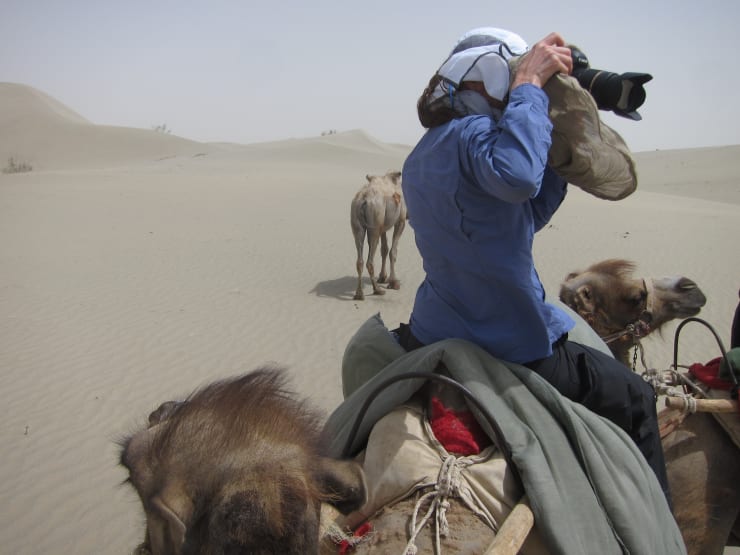-

The works in the first viewing room explore life in our current geological age, the Anthropocene. Climate change, ecology, and its connection to issues such as human health and income inequality are all addressed in Biggs’ videos.
Presented here are three videos that show the breadth of the impact of global warming. Fade to White follows a kayaker in the icy waters of the high Arctic, while A Step on the Sun captures the beauty and danger of sulfur mining at the Kawah Ijen volcano in Indonesia. Point of No Return takes us on a journey through China's Taklamakan desert, a stretch of arid land whose name in the Uyghur language means "you can get in, but you can't get out."
-
Fade to White is the first work from Biggs' Arctic Trilogy (followed by videos In the Cold Edge and Brightness All Around). To create the work the artist embarked on an expedition in the high Arctic, traveling aboard an ice-class, 2-masted schooner built in 1910. During the voyage, Biggs filmed Fade to White, focusing on a crew member as he navigated the ship through iceberg-filled seas, and paddled a kayak past glacier walls and polar bears.
As she photographed the explorer, Biggs tested her own will and endurance. The visual tension of her uncompromising imagery bespeaks their mutual struggle to maintain balance and purpose. The video also reveals the myth of the solitary white male explorer. Biggs explains, "The desire to hold onto the notion of the 'great white north' as a blank space awaiting interpretation only reinforces the idea of the colonial polar hero. The 'virgin' north has now been mapped, surveyed, and mined, but increased knowledge has not replaced endless fantasies of discovery." -
Loss and change are implicit in the video's title, Fade to White, which refers to an editing technique used to evoke death or transcendence. Biggs integrated her Arctic imagery with sound and video footage of counter tenor John Kelly, whose age, androgyny, and mournful voice parallel the vanishing Arctic landscape and signal the waning of male dominance.
-
Further Viewing
-
-
A Step on the Sun, just over nine minutes long, follows a sulfur miner through the suffocating environment of the Ijen volcano in East Java, Indonesia, which houses the world's largest sulfuric lake. We watch as the miner collects hardened sulfur crystals and packs them into a basket. Amid clouds of toxic sulfur dioxide gas, he carries heavy loads up a steep, rocky path from the crater floor to the rim, then to a distant weigh-station. The video is a provocative mix of natural beauty and human exploitation--a perfect description of life in the Anthropocene.
-
Alongside footage of the sulfur miners is the release of a weather balloon by the National Oceanic and Atmospheric Administration (NOAA) station in New York. The event is one of two daily releases that occur simultaneously in over 900 locations, and is part of a global effort to gather information on temperature, humidity and pressure in the atmosphere to use in meteorologic forecasts and research.
The balloon serves as a metaphor for hope in A Step on the Sun. Its rise feels like a transcendent moment as it sheds the earthly confines of gravity and enters the atmosphere. Thick clouds of sulfur dioxide are traded in for a crystalline blue, endless sky. Any feeling of lightness, however, is short-lived: like all weather balloons, the one in A Step on the Sun eventually bursts once it reaches a certain height in the atmosphere, and starts to fall back to earth. This return to the terrestrial is fated to occur, possibly forming a dark prediction on the environmental and human cost of sulfur mining. The effort to research climate change in the atmosphere may be global, but the data and its applications do not impact everywhere equally.
-
Further Viewing
-
-
Janet Biggs' video Point of No Return focuses on individuals in the face of cultural loss or change. To many, cultural extinction is a part of human evolution. Whether through assimilation, globalization, technological advancement or battle, cultures expand and disappear.
Filmed in the Xinjiang Uyghur Autonomous Region of China, Biggs documents the rigors of survival for man and beast. Point of No Return examines the loss of a sense of self and way of life in one of the world's most isolating and harsh locations, known as the "Desert of Death."
Biggs traveled into the Taklamakan desert with eight camels and their Uyghur handlers. She filmed the caravan as it journeyed past ancient sites, some in ruins, others buried under the desert. Set against backgrounds of never-ending sand dunes and fevered market activity in the ancient (but disappearing) city of Kashgar, Point of No Return reveals the Uyghurs' grit, endurance and passion for a way of life that is being destroyed by overwhelming outside forces.
The Anthropocene
Past viewing_room



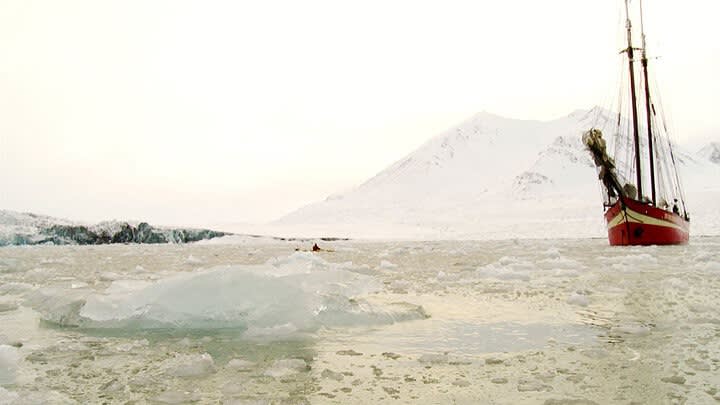



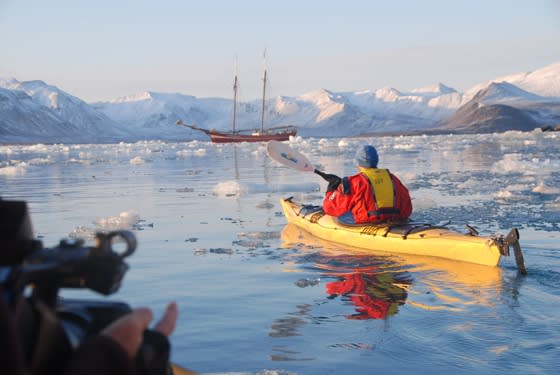




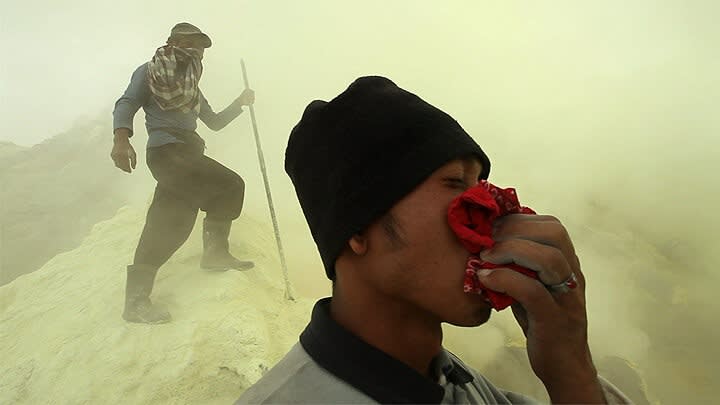
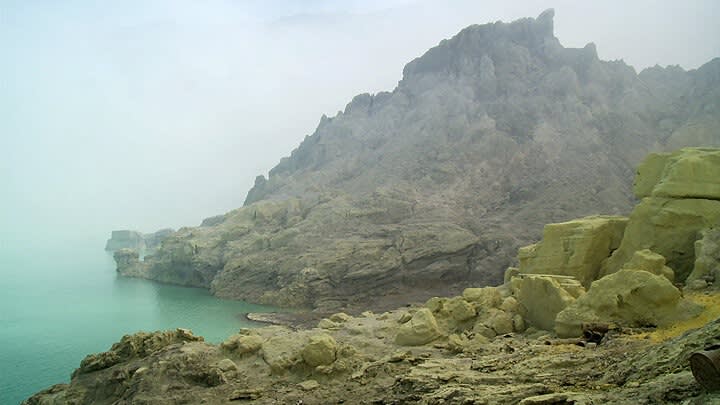
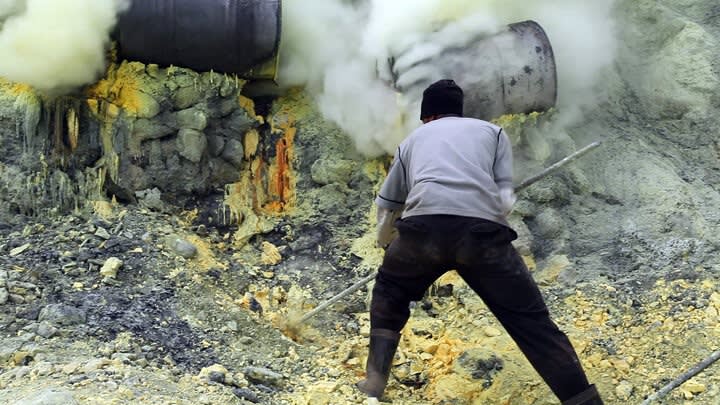




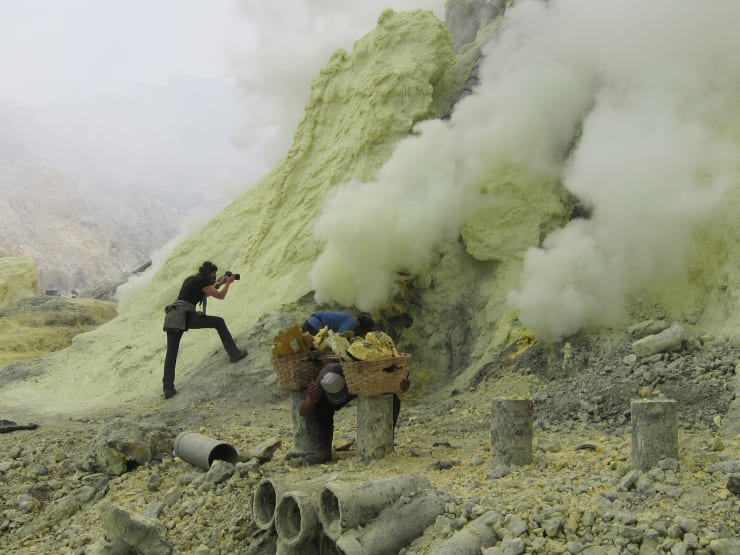


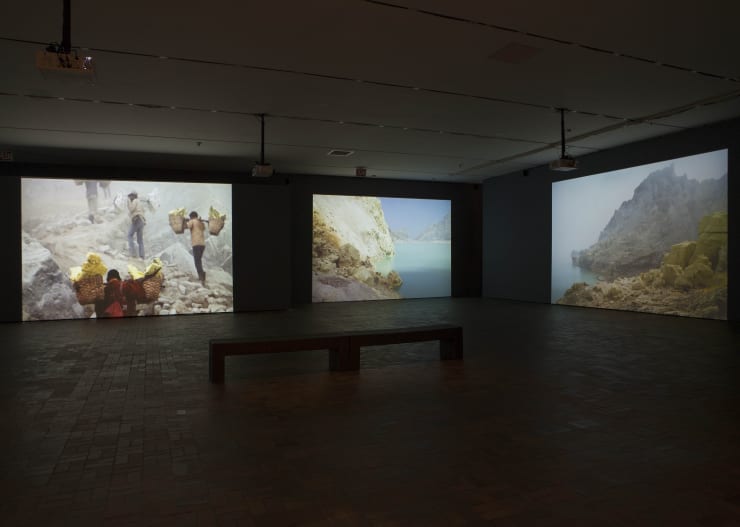

![Janet Biggs, Afar [work in progress], 2016/2021](https://artlogic-res.cloudinary.com/w_740,c_limit,f_auto,fl_lossy,q_auto/artlogicstorage/cristintierney/images/view/ceccb21a9c6988f064f396935d9f8a56j/cristintierney-janet-biggs-afar-work-in-progress-2016-2021.jpg)





